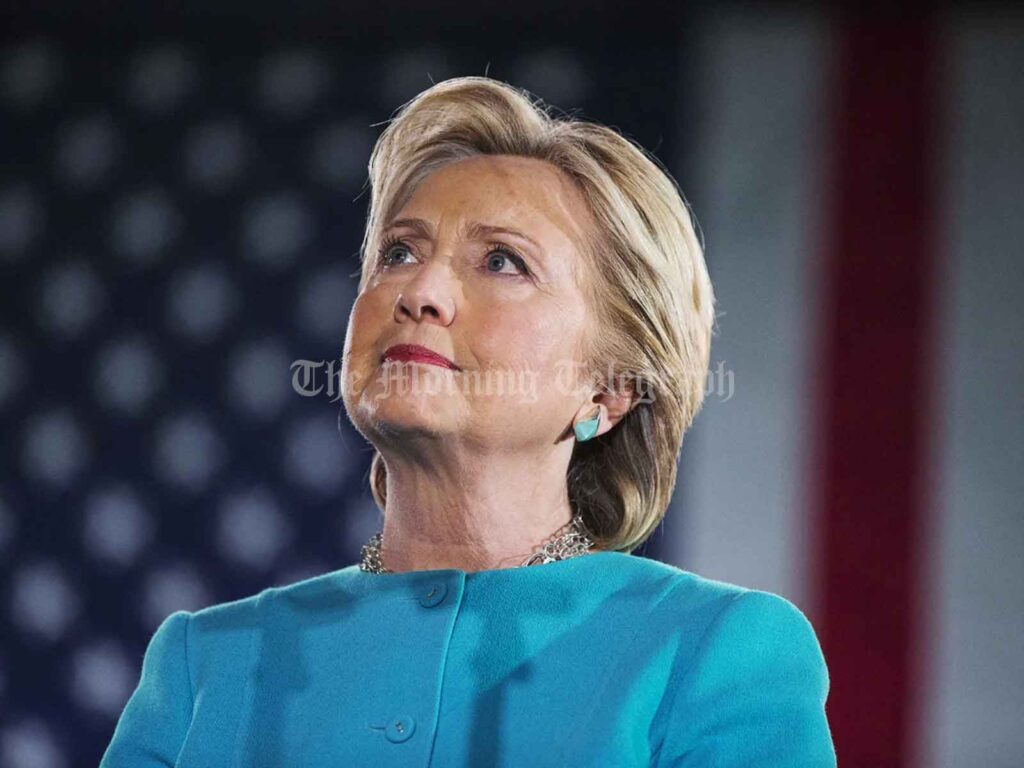
Hillary Clinton says it's time Kamala Harris broke 'glass ceiling'
Hillary Clinton, speaking at the Democratic National Convention (DNC), revisited her historic 2016 campaign, where she became the first woman to secure a major party’s nomination for president. In her address, she urged Vice President Kamala Harris to continue the fight for gender equality by breaking the ultimate “glass ceiling” and becoming the first female president of the United States.
Reflecting on her own journey, Clinton noted that while her campaign was groundbreaking, it ended in a loss to Donald Trump. This defeat, however, catalyzed a wave of activism, including the Women’s Marches and a record number of women running for office in subsequent years. Today, women make up 28.5% of the House of Representatives, a significant increase from just 19.1% in 2017.
Clinton’s message to Harris was clear: the progress made by women in politics over the past decade must continue. She acknowledged that Harris faces a different political landscape than she did in 2016. Back then, Clinton made her gender a central theme of her campaign, even adopting the slogan “I’m with Her.” Harris, in contrast, has largely avoided making her gender the focal point of her candidacy, choosing instead to emphasize her policy achievements and leadership record.
Despite this shift, the issue of gender remains significant. Clinton and other women leaders at the DNC discussed the persistent challenges female politicians face, including sexism and the expectation to meet a higher standard than their male counterparts. For instance, Clinton faced intense scrutiny over her appearance, voice, and personal life during her campaign—a level of scrutiny that many believe would not have been applied to a male candidate.
Minyon Moore, chair of the Democratic National Convention Committee, highlighted the ongoing struggle to change public perceptions and attitudes toward women in leadership roles. She noted that while Clinton “shattered a lot of glass for many people,” the journey is far from over. Women in politics continue to confront stereotypes and biases, whether during campaigns or while serving in office.
Kamala Harris’s campaign has been shaped by these evolving dynamics. While Clinton’s bid for the presidency was a singular moment in the fight for gender equality, Harris’s candidacy is seen as part of a broader movement. As more women enter politics, they have been able to redefine their roles and expectations, moving away from the need to represent all women and toward a more individualized approach.
Supporters of Harris, including many women and voters of color, have rallied behind her, portraying her as a fresh, younger alternative to the aging political figures like Donald Trump. Her candidacy has injected new energy into the Democratic ticket, with many seeing it as a continuation of the progress women have made in politics.
However, the road ahead is not without challenges. As Congresswoman Debbie Dingell of Michigan pointed out, the success of women like Harris must be inclusive, ensuring that no demographic feels left behind. The fight for gender equality in politics, while making significant strides, still requires ongoing effort to achieve true representation and fairness.
In summary, Hillary Clinton’s speech at the DNC was both a reflection on the progress made and a call to action for the future. She passed the torch to Kamala Harris, urging her to break the final glass ceiling and become the first female president of the United States, while acknowledging the unique challenges that still lie ahead for women in politics.




